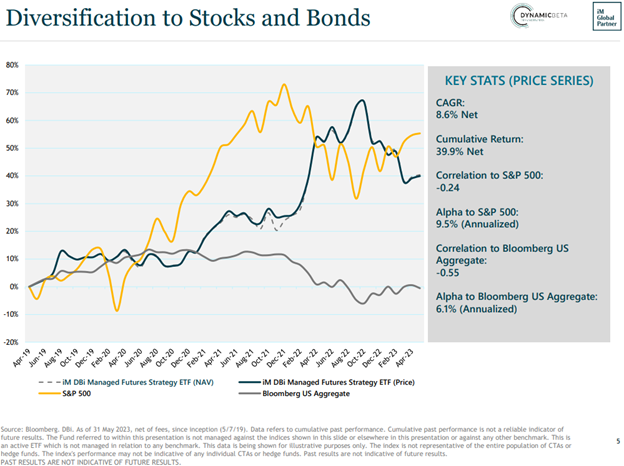This year remains challenging as investor and market uncertainty persists. Managed futures funds that outperformed last year mostly pulled back in the first half of this year. In ups and downs, however, these strategies remain a strategic allocation for portfolios for their diversification and outperformance potential in market dislocations.
2022 brought with it enhanced and varied market risk for investors, alongside a market regime shift. It’s the exact kind of environment that managed futures strategies shine in, and shine they did. In a year when very few assets and strategies performed, these funds largely soared.
This year has been a reversal of that trend, as market trends shift once more but no clear trends emerge. The certainty of the inflation trade that carried the trend following hedge fund strategies so high in 2022 evaporated in March with U.S. regional bank failures.
Since then, markets and investors remain largely uncertain regarding the path and longevity of interest rate hikes. Add in mixed economic signals regarding slowing and labor market resilience, and uncertainty in the path ahead continues to create market turbulence with no clear trends emerging. For trend following strategies, that creates several challenges.
Crisis Alpha Potential Is Noteworthy
Managed futures strategies cemented their crown in 2022 as crisis alpha generators. It’s this crisis alpha potential that makes them so popular with investors and for portfolios. It’s that potential that Andrew Beer, co-founder of Dynamic Beta Investments and co-PM of the iMGP DBi Managed Futures Strategy ETF (DBMF) warrants always including in portfolios.
“The most successful allocators to managed futures – the ones who rode the trifecta of big gains during the early 2000s, 2008, and last year – see it as a strategic allocation,” explained Beer in a communication to VettaFi. “Size it appropriately and plan to own it through both good times and bad.”
The hedge fund strategy capitalizes on diversification. Diversification potential is two-fold; exposure to the futures market provides low correlations to stocks and bonds. Diversification across asset classes within the futures market further enhances non-correlated potential within portfolios. It’s this ability to diversify as well as rapidly shift positions as markets rapidly change that allows the strategy to outperform in market dislocations and downturns.

Image source: Dynamic Beta investments
It’s a strategy that can offer performance even in less volatile markets and is worth inclusion in portfolios at all times. Having a managed futures strategy already within a portfolio allows for gains and strong performance potential when a market crisis strikes.
“Allocators who reaped big gains in managed futures in 2022 bought into the strategy before it became hot again,” Beer explained. Anyone who missed 2022 should be laser-focused on adding it today.”
See also: “As Luck Would Have It: DBMF’s Investing Coin Flip Anomaly“
Investing in Managed Futures With DBMF
The iMGP DBi Managed Futures Strategy ETF (DBMF) seeks to capture the average return of the 20 largest managed futures hedge funds. By offering the strategy within the cost-efficient ETF wrapper, DBMF seeks to provide similar performance with significantly reduced management fees.
DBMF is an actively managed fund that uses long and short positions within derivatives (mostly futures contracts) and forward contracts. These contracts span domestic equities, fixed income, currencies, and commodities (via its Cayman Islands subsidiary).
“Other allocators dial exposure up or down depending on their macro views and how we’re positioned. We built DBMF with daily transparency to help these guys see what we own,” Beer said. “The secret is to never take managed futures to zero – otherwise it’s too difficult to get back in.”
The position that the fund takes within domestically managed futures and forward contracts is determined by the Dynamic Beta Engine. This proprietary, quantitative model attempts to ascertain how the largest commodity-trading advisor hedge funds have their allocations. It does so by analyzing the trailing 60-day performance of CTA hedge funds and then determining a portfolio of liquid contracts that would mimic the hedge funds’ performance (not the positions).
DBMF has a management fee of 0.85%.
For more news, information, and analysis, visit the Managed Futures Channel.

